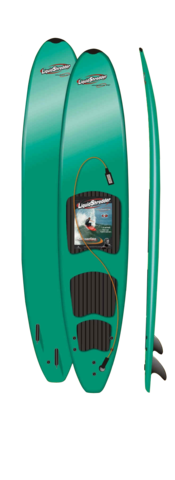Surfboard shapers took benefit from hydrodynamic engineering concepts plus present day cutting edge technology to create surfboards with performance characteristics like never before. Thus a lot more emphasis has been intended for improvements of specific surfboard style aspects which were never given as very much attention in the past.
One of these may be the bottom level of the surfboard. It’s the right component of an 8ft Surfboard which makes contact with the wave. Today there are many bottom contours or construction in on-going board designs. Even though each one of these contour styles can be put on any type of surfboard, there are particular contours that work greatest on a specific type of board.
Flat Bottom

Surfboards were formerly shaped with flat bottoms. As the name says, smooth bottom boards are literally smooth, having no contour, producing a very fast board. Flat bottom level surfboards are usually used for little mushy waves where you will need that extra speed. Smooth bottoms, however, are not perfect for riding big waves since when the waves increase and faster, you won’t have to worry about gaining rate but more about having the ability to control the surfboard at high speeds.
A Flat bottom generally is effective for all sorts of surfboards and is particularly a choice for heavy surfers whose added pounds causes drag. In case you are a newbie, a set bottom board may also be best for you personally as these boards will be the most stable and least complicated to understand on. Some surfboards were created with Smooth bottoms running your entire amount of the surfboard, from the nasal area to tail, while various other boards were created with flat areas.
Single Concave Contour
This contour enables the water within the board to stream through a channel which therefore pushes the drinking water from the nasal area to the fins and out the tail, hence, accelerating the board. Drinking water is prevented from releasing from the rails, making the lift and extra speed. The one concave contour design is focused on providing surfboards with additional velocity, which makes it ideal for a midsize, hollow, clean browse. This is why the solitary concave contour is a favorite choice with surfers who are brave plenty of to surf limited in the pocket of a wave. Longboards frequently have this contour close to the front portion of the surfboard to facilitate easy nasal area riding.
The Double Concave Contour
It starts with an individual concave at the nasal area and steadily transitions into two concaves operating completely down into the tail. For this reason, the double concaves are often found close to the board’s tail. The solitary concave portion of the surfboard bottom level produces an excellent planning surface gives the board drive, as the double concave component splits the drinking water into two channels, making the board and simple to maneuver – ideal for flowing loose, transitions from turn to carefully turn.
Vee Contour
As its name implies, you’ll do you know what a vee surfboard bottom appears like easily. Well, you’re right. It gets the letter “v” form, making the stringer its lowest stage in water. A vee bottom contoured board can be combined with a single or double concave also. This sort of bottom contour is most beneficial for rail-to-rail surfing since it gives the surfer extra leverage for maneuvering, which makes turning fast and easy.


